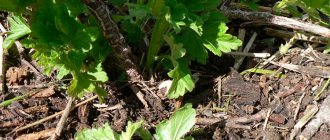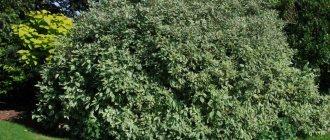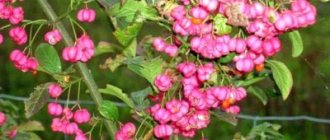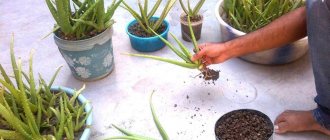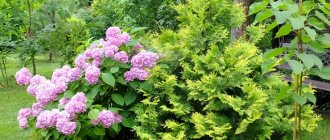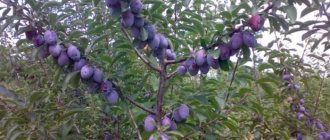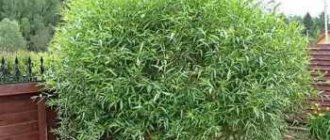Specifics of plum propagation
There are 4 main methods of propagating plum trees:
- cuttings;
- root shoots;
- grafting;
- germination of seeds.
Experienced gardeners practically do not use seeds to propagate varietal plums. They are used, as a rule, only for growing trees to which cuttings or buds of other varieties are grafted. Such trees are called “rootstocks”.
To grow rootstocks, it is necessary to select high-quality, healthy seeds. They are soaked for several days, regularly mixing and renewing the water. Next, the seed is dried and stored in a suitable container.
Before planting, the seeds are stratified. The procedure involves mixing the seeds with moistened sand or sawdust, followed by storage for 6 months.
Planting of seeds is carried out closer to winter or in spring with the onset of warmth. Rootstock seedlings grow after a year, then they can be used for grafting.
Mistakes of novice gardeners
Despite the fact that the process of propagating plums seems simple, novice gardeners can make a number of mistakes. When growing plum seedlings you must:
- Observe the timing of planting young seedlings.
- For propagation, cuttings and layering must be taken from healthy trees.
- When breeding plums from seeds, it is necessary to stratify the seeds.
- Choose the right place and soil for your future orchard.
- Do not cover the seedling with soil above the grafting level.
- At the initial stage of plant growth, it is necessary to maintain humidity in the tree trunk circle and carry out regular watering.
- When storing cuttings, it is important to maintain the correct temperature.
- Avoid thickening of plantings.
- Do not grow plum trees in acidic soil.
Plums, grown with your own hands from small branches, turned into beautiful fruit trees that produce a bountiful harvest of fragrant fruits, are the highest reward for gardeners. By following the rules of breeding and caring for the plant, a person will certainly receive a decent harvest and increase the varietal population of the orchard without unnecessary investments.
Propagation of plums by cuttings
The most optimal method of plum propagation is cuttings. After just a few years, a tree grown from a cutting will begin to bear fruit. For this method, you can use both woody and green cuttings.
The most common propagation of plums is from green cuttings. Previously, this method was used only in the industrial production of plums, but now it is also actively used by home gardeners. The key advantage is the high propagation rate and good survival rate of cuttings.
Cuttings allow you to grow a large number of plums of the desired variety. However, not every plum variety takes root well. The varieties that form massive root shoots are most successfully propagated by cuttings.
Propagation by lignified cuttings is a simpler method. For this purpose, cuttings are harvested after the vegetative processes are completed.
It is important to properly prepare the mother tree. It should be pruned short 1 year before cuttings. This accelerates the formation of new shoots that can actively develop the root system.
How to grow a peach from a pit - care, maintenance and technology for growing peach at home (95 photos)
Coniferous plants in landscape design: how to create a beautiful composition in your garden
Why plums do not bear fruit - 10 main reasons and tips for choosing a method of treating plums and restoring the harvest
Cutting time
It is necessary to ensure the safety of the cuttings until grafting. Green cuttings are harvested at the time of active growth (mid-summer). Lignified ones are harvested after the growth cycle is completed.
But lignified cuttings cannot be harvested during frosts. Therefore, in the event of an early onset of winter, it is better to prepare them at the very beginning of spring, when the buds have not yet begun to swell.
Optimal timing
Lignified cuttings are prepared in advance and stored in the basement or refrigerator. If the storage conditions are maintained correctly, they can be kept for up to 3 years.
In the fall, when the tree has accumulated as much useful substances as possible and is at rest, the material is cut.
Preparation of cuttings can be done in the spring. The main thing here is to have time to make the preparation before the buds swell.
Green samples are cut exactly the opposite way. The tree must develop intensively. In the summer, in July, you can start preparing.
Recommendations for harvesting green plum cuttings
The diameter of the cutting should be about 7 mm. Thin samples dry out even before merging with the rootstock. Cuttings are prepared from actively growing shoots 40-50 cm long. The age of the shoot should be 1 year.
You should not use weak shoots, they do not take root. If there are no strong growths, it is better to perform anti-aging pruning of the tree and postpone the preparation of cuttings until next year.
It is advisable to store cuttings at a temperature of 2°C to 4°C. In snowy regions, cuttings are stored directly in the snow, at a depth of 50-70 cm. If thaws occur frequently, they are first covered with wet sawdust and frozen in severe frost.
Purchasing seeds in bulk: 3 signs of a reliable store
At what distance to plant grapes from each other: tips and recommendations from professionals on planting grapes on a personal plot (125 photos and videos)
Gooseberry health benefits and harms: beneficial properties for the body and description of the contents of the berry (115 photos + video)
A layer of sawdust forms a protective structure. Then they are covered with a 30-40 cm layer of dry sawdust and stored in the shade, covered with plastic wrap.
Before planting, the cuttings should be slowly defrosted by moving them to a warmer place in advance.
Propagation secrets and gardening tips
Many gardeners, who have repeatedly completed all the processes of propagating fruit trees, know how to cut plums in the summer, and are confident that a positive result is possible only if the following rules are observed:
- You can root the branches at home and in greenhouse conditions. For greater efficiency, use a root growth stimulator.
- In autumn, watering stops.
- In winter, it is important to harden summer cuttings.
- There is no need to waste time rooting weak cuttings; it is better to postpone the procedure until next year.
- If it was not possible to propagate plum trees using cuttings in the summer season, it is worth trying spring rooting of lignified specimens, which will have more time to adapt and prepare for winter.
Experts are confident that in order to obtain high-quality seedlings, it is necessary to create optimal conditions and a healthy mother tree aged from 3 to 10 years.
Nuances of plum cuttings
Knowing how to propagate plum trees correctly at home, you can get many high-quality seedlings and fill your garden with your favorite fruit trees. Compliance with the rules for caring for a young plant will contribute to rapid rooting, rapid development and fruiting.
Rooting cuttings
The depth of planting the cuttings is 3 cm. A distance of 5 cm is sufficient between the cuttings themselves. After planting, they are covered with polyethylene stretched over a frame made of wood or wire. It is necessary to create a microclimate with a temperature from 25°C to 30°C. Watering is carried out 2-3 times a day.
There are varieties in which roots form within 2-3 weeks. But there are also those who take about 30 days. After adventitious roots form during the day, provide air flow by lifting the polyethylene.
30 days after the roots form, it is necessary to apply mineral fertilizer as a top dressing with abundant watering.
Red currant care and cultivation: varieties, pruning, planting and propagation rules at home (115 photos)
Black elderberry: planting, watering, pruning and propagation. Contraindications, medicinal properties and recipes for feeding elderberry (110 photos)
A berry similar to a blackberry: an overview of black berries growing on bushes and trees. 95 photos and videos of fruit and ornamental plants
Before wintering, the cuttings should be covered with a peat or leaf layer for insulation.
How to propagate plum using seeds
When growing rootstocks, it is recommended to use seeds taken directly from mature fruits. It is worth noting that they should not be susceptible to various diseases and certain pests. After collection has been carried out, the seeds must be removed, washed, thoroughly cleaned of pulp and soaked for three days, changing the water regularly. When all procedures are completed, the seeds are dried and stored in containers (always made of glass).
Before the sowing process, the seeds are stratified.
How it's done? They should be mixed with sand, sawdust or other types of material that tend to hold water well. The filler for stratification must be:
- moist, but not soggy;
- with a temperature of no less than +1 °C and no more than 10 °C.
This process should last approximately 150 to 180 days. During the germination of half of the seeds that were sown, it would be appropriate to transfer them to the refrigerator and store them in these conditions until spring.
Read also: Raspberry “Caramel”: description of the variety and agricultural cultivation techniques
You need to sow seeds between April and May (here you should rely on the weather). The distance between sprouts in a row should be 10 cm, between the rows themselves - 70 cm.
In autumn, rootstocks that have reached the required height are budded. The rest are left until spring, and are also grafted with the type of tree that needs to be kept on the site in the future.
There are plum varieties that should be propagated by root shoots. For these purposes, the root, which serves as a connection between the shoot and the mother plant, is carefully chopped, dug up in the spring and transplanted to the chosen place as a permanent one.
Planting a young plum
The advantage of plums is that they are undemanding to the soil. But, she does not like stagnant moisture. If you purchase or prepare seedlings for autumn, they must be covered with spruce branches and snow. With the onset of spring, seedlings are dug up and planted when the buds begin to swell. For good survival, it is important to get to the right moment.
The preparation of holes for planting is carried out in the fall or spring, 10-15 days before planting. The hole should be approximately 50 cm deep and 70 cm wide. A wooden support is installed in the central part, around which the planting mixture is scattered.
The root system of the seedling must be carefully straightened in the hole and sprinkled with soil without adding fertilizer. After planting a tree, water it with about 40 liters of water and lay a layer of mulch.
The planting mixture usually consists of soil, rotted manure, potash and phosphate fertilizers, river sand and a small amount of gravel.
The process of planting a young plant
The plum tree grows well in any soil, but does not tolerate stagnant water. When choosing a location, do not forget to determine the depth of groundwater. The main condition for location is sunny space, without wind. The shade has a negative effect on plums - it gives a lighter shade of leaves and small fruits.
See also
Description and characteristics of plum variety Alyonushka, cultivation and care, pollinatorsRead
The planting site is prepared in the fall, since in the spring the ground is frozen, and the funnel must stand for at least 2 weeks before planting. The depth of the pit is 0.5 meters. The diameter is chosen so that the root system is comfortable, usually 0.7 meters. Place a peg in the center. Only fertile land is used. Therefore, it is left around the seat. If there are a large number of young trees, it is worth maintaining a distance of 3 meters between funnels.
A seedling is dug up from its site before planting, preferably with a clod of earth. This is another secret to quickly taking root in a new place.
A purchased copy, purchased in the fall, is buried in the ground. Cover with spruce branches and add snow in winter.
As soon as the buds swell, the time for planting has come:
- The seedling is installed on the north side of the peg. Gently spread the roots along the bottom.
- Covered with fertile soil.
- The neck is left 5 centimeters above the soil level.
- The earth is compacted.
- 4 buckets of water are slowly poured under each seedling.
- Peat or humus is placed on top.
A layer of mulch will maintain moisture and eliminate weeds.
Plum propagation by layering
On a plum branch 15-20 cm from the top, remove a little bark along the entire circumference. You can also make an incision. Make a small ball of sphagnum moss.
Fix it in place of the removed bark and wrap it with opaque film. In warm weather, root formation will occur fairly quickly.
Cut off the resulting cuttings with roots from the mother tree. The substrate should remain on the layering. Now you can plant the cuttings in the desired location.
In spring, cuttings are made from last year's branches. At the end of summer, new shoots can also be used. But, in this case, it is necessary to cut off the leaves below 15-30 cm from the top of the shoot.
Selection and preparation of cuttings
Well-developed young trees with a productive root system and uterine shoots are suitable for harvesting cuttings or layering.
Having chosen a suitable day, sections of stems are cut with a sharp knife from healthy shoots of the current year.
How to take cuttings:
- Each cutting – green/woody – should have 2-4 living leaves/eyes, depending on the length of the internodes. Usually the length of the cutting is 10-15 cm.
- The shoots should be about the thickness of a pencil. This slows down the drying out of the cuttings.
- The lower cut is made directly under the lower bud along an oblique line, at an angle of 45°, to increase the area for absorption of nutrients during rooting.
- The upper cut above the sheet, on the contrary, is straight - in order to reduce evaporation. For green cuttings, leaves are also removed for this purpose, leaving only the top one.
When propagating by air layering, the cuttings are prepared on the shoot of the previous year and the cuttings are cut off from the mother plant after the roots have appeared.
The procedure for preparing air layering is as follows:
- In the spring, a circular cut is made in the bark of the shoot at a distance of 15-20 cm from the top of the branch.
- The resulting ring without bark is wrapped in a lump of sphagnum moss and covered with plastic wrap on top.
Propagation of fruit trees by green cuttings.
Rooting methods
Root formation occurs under certain temperature, climatic and chemical conditions. Suitable temperature and humidity can be ensured in a greenhouse with polyethylene film stretched over the arcs.
When planting lignified cuttings in spring, the soil must be preheated.
Reference. The possibilities of this rooting method are expanded with the use of various purchased nurseries, including automatic humidification systems - fog-forming units.
The simplest way to root at home, if you don’t have time to set up a greenhouse, is to plant cuttings in pots or boxes (shelter is also necessary). It is useful to place a container of water between the pots, since the soil in them dries out faster than in the garden bed.
In the case of air layering, the greenhouse effect is created in moist sphagnum moss inside a polyethylene cover. Moss must be kept moist at all times. In such an environment, aerial roots form at the cut site. In the fall, cuttings with formed roots are carefully separated from the mother plant and planted in the ground.
Is it possible to grow a plum from shoots and will it bear fruit?
A simpler method of vegetative propagation is also popular among gardeners - using root shoots - shoots formed from dormant buds on the roots of plants.
The coppice method is often used for growing plums, since many varieties of this crop are capable of forming root shoots until an old age.
In this case, stems already growing from the ground are used as planting material. All that remains is to correctly separate the younger generation from the maternal generation.
The main secret here is the selection of promising sprouts: the least suitable are those that grow close to the trunk - they have a weak and less developed root system.
At the end of summer or autumn, at the end of the growing season, you should cut off the root connecting to the main plant and transplant the young tree to a prepared place. If everything is done correctly, the harvest can be harvested in 1-2 years.
Important! This propagation method is only suitable for rooted plants and is not used for grafted ones.
Propagation of plums by root shoots
The easiest way to propagate plums is by root shoots. But there are a number of nuances here. Many gardeners wonder about plum shoots - will the tree bear fruit and will the shoots take root? Not all sprouts are suitable for propagation. Do not use those located close to the mother tree.
Whether a plum grown from shoots will bear fruit and whether it will take root at all depends on the correct preparation of the sprouts. With the right approach, the first fruits will appear within a year or two.
After the completion of vegetative processes in the fall, it is necessary to disconnect the sprout from the mother tree by cutting off the root. You need to dig up the sprout in the spring and immediately transplant it to the desired location. You can also immediately cut off the root, dig up and replant the shoots, but this must be done in August-September. It can also be transplanted in early spring, before the buds open.
Ways to get rid of root growth
When caring for a plum tree, one of the most important steps is removing the root shoots. It refers to shoots that appear from adventitious buds, usually 4-5 years after planting. One of the main reasons for its occurrence is violations of the planting process.
Root shoots quickly spread throughout the entire area of the site. If you allow her to do this, then soon the area will resemble an impenetrable jungle. It also prevents the full development of the mother tree. For these reasons, it is necessary to get rid of it.
One proven method is pruning. It needs to be carried out thoroughly: find the roots of the shoots and cut off the shoots along with them.
Constructing obstacles from scrap materials is a surefire way to remove unwanted vegetation. First, you should draw a circle with a diameter of half a meter near the trunk. Then the soil in it must be watered and leveled. You can fill the hole with a variety of materials:
- metal;
- plastic;
- rubber.
The materials must have a dense structure and be relatively heavy. From above, all this should be covered with film or fabric material. There will be no harmful grass in this space.
Another option for destroying root growth is chemical, but it has its drawbacks. Despite the rapid action, the substances can harm the plum. They must be used taking precautions and avoiding contact with the leaves. One of the best products is the Roundup spray.
Overgrowth prevents the tree from fully developing
